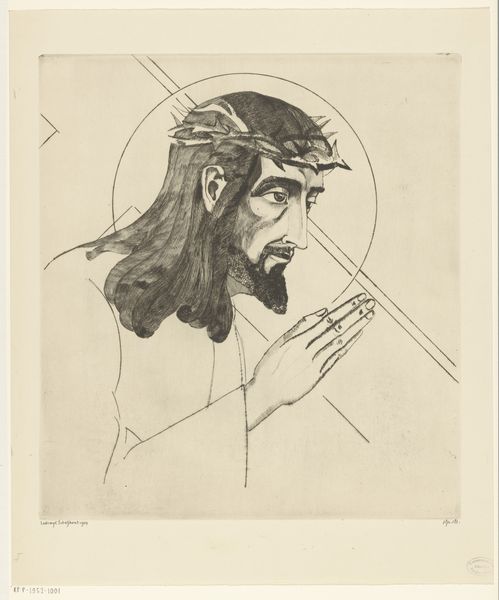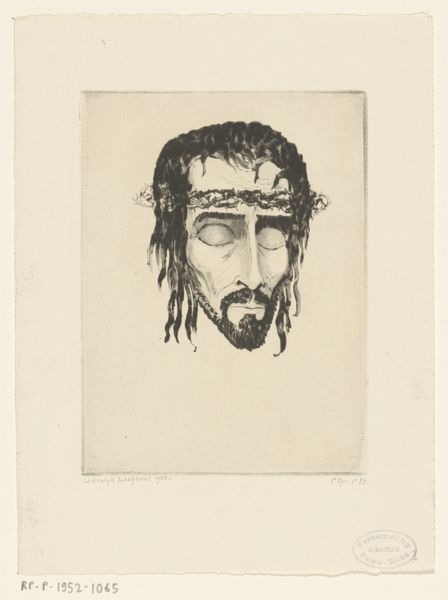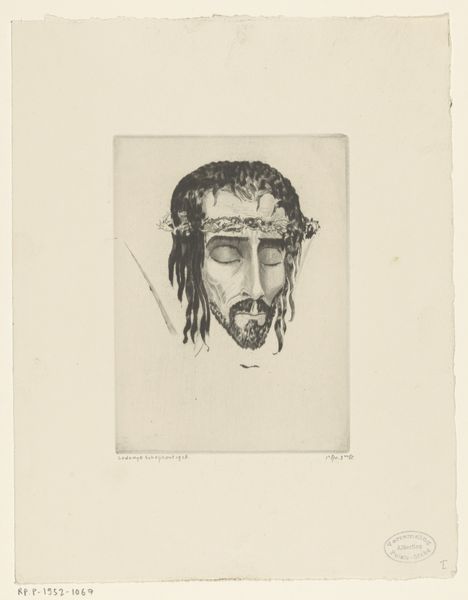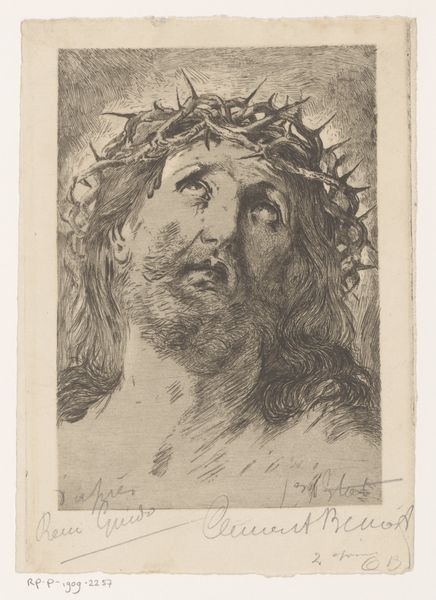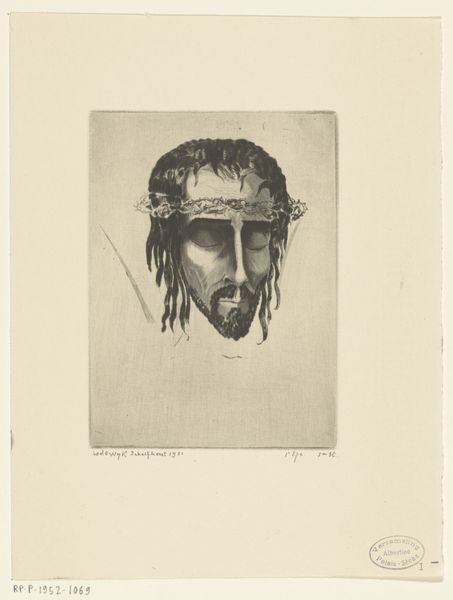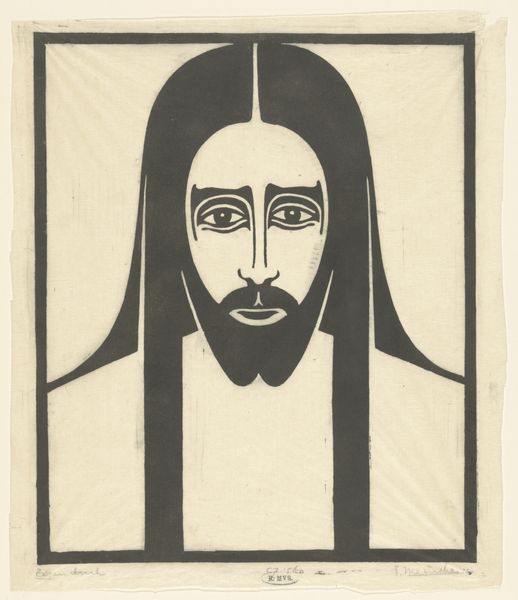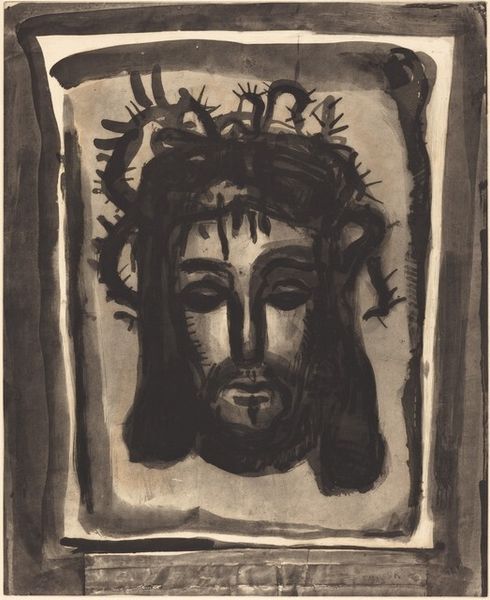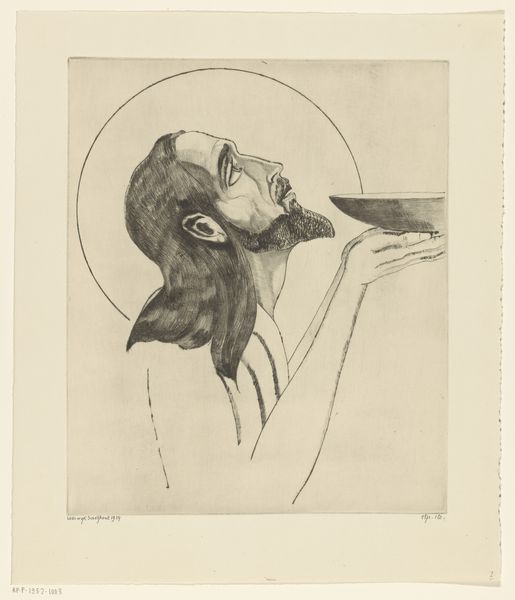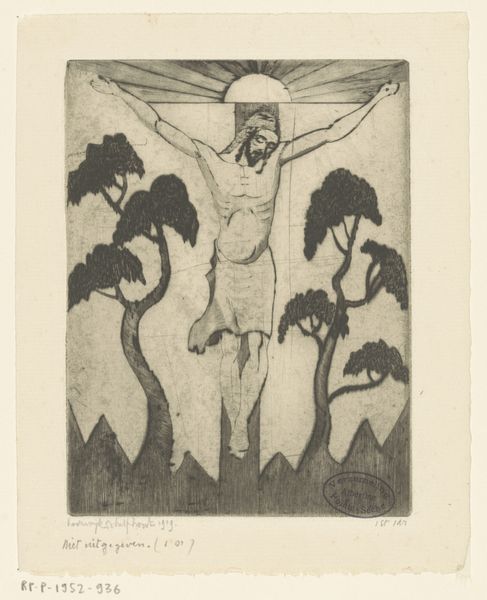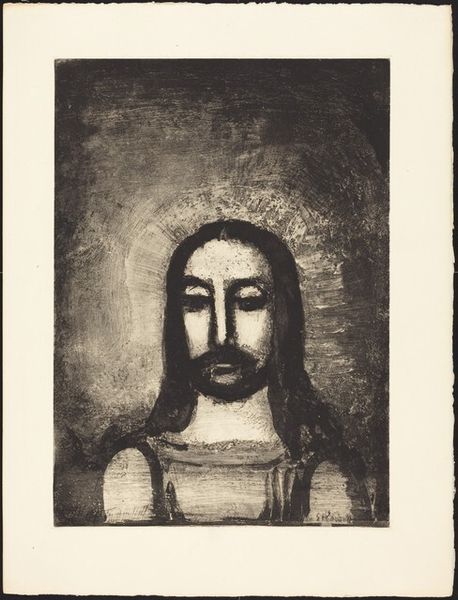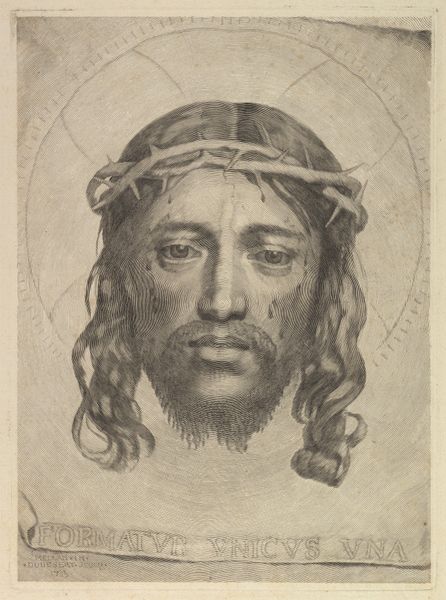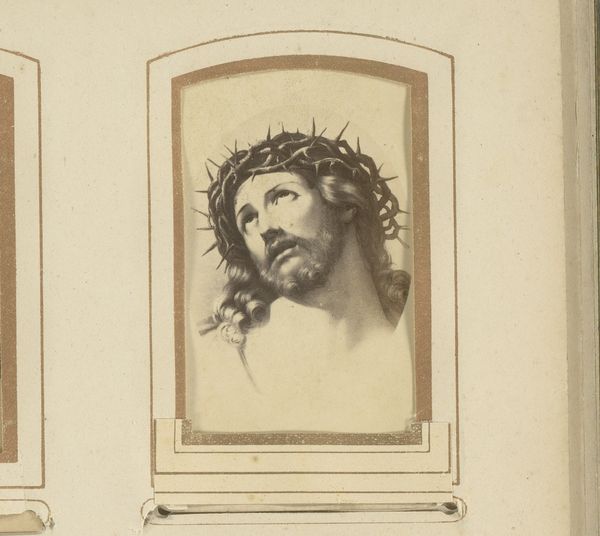
print, etching
#
portrait
# print
#
etching
#
figuration
Dimensions: height 395 mm, width 357 mm
Copyright: Rijks Museum: Open Domain
Lodewijk Schelfhout created this poignant image of Christ carrying the cross using etching, a printmaking process with a fascinating history. The artist would have coated a metal plate with a waxy, acid-resistant substance, then scratched the image into this coating, exposing the metal beneath. Immersing the plate in acid would then bite away at these exposed lines, creating grooves that would hold ink. The whole plate is then inked, the surface wiped clean, and the image is transferred to paper under great pressure in a printing press. The beauty of etching lies in the artist's ability to achieve a wide range of tonal values, from delicate lines to rich, dark shadows. Schelfhout uses this to great effect here, drawing attention to the suffering in Christ's face and hands. The industrial revolution allowed for the mass production of prints like this, making art more accessible to ordinary people and embedding art within everyday life. Looking at this print, we can appreciate not only the artist's skill but also the complex interplay between materials, processes, and social context that gives the artwork its full meaning.
Comments
No comments
Be the first to comment and join the conversation on the ultimate creative platform.
